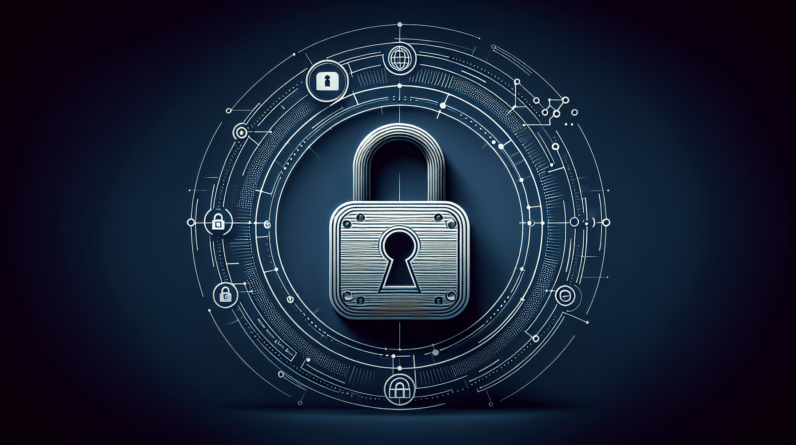
Creating faceless videos has become increasingly popular in today’s digital age, allowing individuals to express their creativity while preserving their privacy. However, as you embark on this innovative journey, it is essential to be aware of the potential privacy concerns that may arise. From unintentionally revealing personal information through background elements to the risk of unauthorized sharing, understanding and navigating these issues is vital to ensure a safe and enjoyable video creation experience. In this article, we will explore some key privacy concerns to help you navigate the world of faceless video creation with confidence and peace of mind.
Privacy concerns in faceless video creation
Why privacy matters in faceless video creation
When it comes to faceless video creation, privacy considerations are of paramount importance. Even though the focus may be on concealing the face, there are still potential risks and implications for the privacy of individuals involved. Privacy matters because it protects the personal information and data of individuals, ensuring their rights and maintaining their trust. As a creator of faceless videos, it is crucial to understand and address these concerns to protect the privacy of both yourself and those featured in the content.
Understanding the potential risks
Faceless video creation does not guarantee complete anonymity or protection of personal information. There are various risks associated with the collection, storage, and use of data during the creation process. One notable risk is the possibility of re-identification, where individuals can be identified based on contextual information, such as clothing, voice, or other identifying factors. Additionally, there is a risk of unauthorized access to personal data, potential misuse of sensitive information, and even the unintended disclosure of identities. It is essential to be aware of these risks and take appropriate measures to mitigate them effectively.
Complying with privacy laws and regulations
To ensure privacy in faceless video creation, it is essential to understand and comply with relevant privacy laws and regulations. These regulations provide a legal framework for data protection and privacy rights. Familiarize yourself with the laws and regulations applicable in your jurisdiction, as well as any international standards that may be relevant to your work. Adhering to these laws not only safeguards the privacy of individuals but also helps build trust with your audience. Compliance can involve obtaining informed consent, implementing data protection measures, and implementing secure storage and access controls, among other steps.
Faceless video creation and data protection
Data protection principles and considerations
Data protection principles play a crucial role in faceless video creation. These principles guide the responsible collection, processing, and storage of personal data. One such principle is data minimization, which emphasizes limiting the collection and retention of personal data to what is necessary for the intended purposes. Additionally, the principle of purpose limitation ensures that personal data is only used for the specific purposes for which consent was obtained. By following these principles and considering the potential privacy implications, creators can help protect the privacy of individuals featured in faceless videos.
Anonymization and pseudonymization techniques
Anonymization and pseudonymization techniques are essential tools for ensuring privacy in faceless video creation. Anonymization involves removing or modifying personal identifiers from data, making it impossible to identify individuals directly. Pseudonymization, on the other hand, replaces identifying information with pseudonyms, allowing data to be linked back to individuals through an additional key. These techniques help reduce the risk of re-identification and provide an added layer of protection for the privacy of individuals involved in faceless videos.
Securing personal data during video creation
To protect personal data during faceless video creation, it is vital to implement appropriate security measures. This includes securing devices and networks used for video recording to prevent unauthorized access. It is also crucial to implement encryption techniques to protect the personal data during storage and transit. Furthermore, regular software updates and patches should be applied to maintain the security of editing tools and software. Taking these measures can help safeguard the personal data of individuals involved and prevent any potential breaches or unauthorized access.
Ensuring consent in faceless video creation
Importance of obtaining consent
Obtaining consent is a fundamental aspect of respecting privacy in faceless video creation. Consent serves as a legal and ethical basis for collecting, processing, and using personal data. It ensures that individuals are aware of how their data will be used and gives them the opportunity to make an informed decision. It is important to note that consent must be freely given, unambiguous, and specific to the purposes for which it is obtained. By obtaining explicit consent from individuals involved in faceless videos, you demonstrate your commitment to privacy and create a foundation of trust.
Providing clear and informed consent
When seeking consent for faceless video creation, it is crucial to provide clear and comprehensive information to individuals. This includes informing them about the purpose of the video, the data that will be collected, and how it will be used. Additionally, individuals should be made aware of their rights regarding their personal data and given the opportunity to ask questions or seek clarification. By providing clear and informed consent, you create transparency and ensure that individuals understand the privacy implications associated with being featured in faceless videos.
Ensuring consent for different purposes
As a creator of faceless videos, it is essential to ensure that consent is obtained for different purposes. This includes obtaining separate consent for video creation, editing, storage, and sharing. Individuals should have the option to provide consent for specific activities while maintaining control over their personal data. By separating consent for various purposes, you respect individual preferences and ensure that their privacy choices are respected throughout the entire lifecycle of the faceless video.
The role of facial recognition technology
Potential privacy risks associated with facial recognition
While faceless video creation aims to conceal identities, it is important to be aware of potential privacy risks associated with facial recognition technology. Facial recognition algorithms can analyze features other than the face itself, such as clothing, to potentially identify individuals. This poses a risk of re-identification and compromise of privacy. Additionally, facial recognition algorithms might not always be accurate, leading to false identifications or misinterpretations. To mitigate these risks, it is important to understand the limitations and potential implications of using facial recognition technology in faceless video creation.
Ensuring data privacy in face recognition algorithms
To protect privacy in faceless video creation, it is crucial to ensure that data privacy is maintained when utilizing face recognition algorithms. This involves implementing privacy-enhancing technologies and techniques, such as differential privacy, which adds noise to data to protect individual information. It is also important to regularly assess the accuracy and reliability of face recognition algorithms. By prioritizing data privacy and taking appropriate measures, you can mitigate potential privacy risks associated with facial recognition technology.
Transparency and user control
Transparency and user control are essential when using facial recognition technology in faceless video creation. Users should be aware if their personal data is being analyzed and provided with options to opt out or control the use of their data. Clear and easily accessible privacy policies and explanations of how facial recognition technology is used can help foster trust and allow individuals to make informed decisions. By empowering users with control over their personal data, you prioritize their privacy and build a respectful and responsible video creation environment.
Safeguarding against unauthorized use and sharing
Implementing secure storage and access controls
To safeguard against unauthorized use and sharing of faceless videos, it is crucial to implement secure storage and access controls. Personal data and faceless videos should be stored in encrypted formats and stored on secure servers or cloud platforms with strong access controls. Access should be limited to authorized individuals or trusted third parties, and appropriate authentication mechanisms, such as strong passwords or multi-factor authentication, should be utilized. By implementing these measures, you can ensure that the privacy of individuals featured in faceless videos is protected from unauthorized access.
Encrypting faceless videos and personal data
Encryption is a vital tool in protecting the privacy of faceless videos and personal data. By encrypting the videos and associated metadata, you can prevent unauthorized access and ensure that even if the data is compromised, it remains unreadable without the decryption key. It is important to use robust encryption algorithms and keep encryption keys secure. Encrypting faceless videos and personal data adds an extra layer of protection and reduces the risk of privacy breaches.
Monitoring and detecting unauthorized access
Regular monitoring and detection of unauthorized access is essential in mitigating privacy risks in faceless video creation. Implementing intrusion detection systems, access logs, and regular audits can help identify any suspicious activities or unauthorized access attempts. Prompt action should be taken in case of any breach or unauthorized access, including notifying affected individuals and taking steps to prevent further unauthorized use. By actively monitoring and detecting unauthorized access, you can maintain the privacy and security of faceless videos and personal data.
Handling sensitive information in faceless videos
Identifying and handling sensitive data
Sensitive information may be present in faceless videos, even without revealing identities. This can include personal health information, financial data, or other confidential information. It is important to identify and handle sensitive data with the utmost care and attention to privacy. Implement appropriate security measures, such as encryption, while storing and transmitting sensitive data. Additionally, limit access to sensitive information to only those individuals who require it for specific purposes. By handling sensitive information responsibly, you protect the privacy of individuals involved in faceless videos.
Recognizing privacy implications of audio content
While the focus may be on concealing the visuals, it is important to recognize the privacy implications of audio content in faceless videos. Voice recognition technology can be used to potentially identify individuals based on their unique voice patterns. Therefore, it is crucial to consider the privacy implications of audio recordings and take appropriate measures to protect the privacy of individuals. This may include obtaining separate consent for audio recordings, anonymizing or pseudonymizing audio data, or implementing security measures to prevent unauthorized access to audio content.
Protecting personally identifiable information
Although faceless videos aim to conceal identities, it is still important to protect any personally identifiable information (PII) that may be present. PII refers to any information that can be used to identify an individual, such as names, addresses, or contact information. Limit the collection and retention of PII to what is absolutely necessary for the intended purpose. Implement appropriate security measures, such as encryption and access controls, to protect PII from unauthorized access or disclosure. By protecting PII, you prioritize the privacy of individuals and reduce potential privacy risks.
Minimizing privacy risks during faceless video editing
Limiting data retention and deletion policies
To minimize privacy risks during faceless video editing, it is important to establish clear data retention and deletion policies. Only retain personal data for as long as necessary to fulfill the specific purposes for which consent was obtained. Once the purpose has been fulfilled, ensure that personal data is promptly and securely deleted. Additionally, establish processes and mechanisms to respond to data deletion requests from individuals. By implementing data retention and deletion policies, you demonstrate your commitment to privacy and reduce the potential risks associated with storing unnecessary personal data.
Securing editing tools and software
Faceless video editing often involves the use of various tools and software. It is crucial to ensure that these tools and software are secure to mitigate privacy risks. Keep editing tools and software up to date with the latest security patches and updates. Utilize reputable and trusted software from reliable sources. Additionally, consider implementing access controls to restrict editing tool usage to authorized individuals. Securing editing tools and software helps protect the privacy and integrity of faceless videos throughout the editing process.
Auditing access and ensuring accountability
To minimize privacy risks during faceless video editing, it is important to establish auditing mechanisms and ensure accountability. Regularly audit access to editing tools and personal data to identify any unauthorized activities or potential privacy breaches. Maintain logs and records of editing activities for accountability purposes. By auditing access and ensuring accountability, you create a transparent and responsible editing environment that prioritizes the privacy and security of faceless videos.
Mitigating privacy threats in video storage and sharing
Selecting secure storage platforms and services
When it comes to storing faceless videos, selecting secure storage platforms and services is crucial to protect privacy. Choose reputable and trusted service providers that prioritize data security and have robust security measures in place. Assess their data protection policies and practices, such as encryption, access controls, and regular security audits. Additionally, consider the physical security measures implemented by the storage provider, such as data center security and backup procedures. By selecting secure storage platforms and services, you can mitigate privacy threats and ensure the confidentiality of faceless videos.
Understanding privacy settings and access controls
It is essential to understand the privacy settings and access controls available when sharing faceless videos. Ensure that the storage platform or service offers granular privacy settings, allowing you to control who can access the videos and associated data. Familiarize yourself with the available options, such as password protection, restricted sharing options, or expiration dates for shared links. By utilizing these privacy settings and access controls effectively, you can limit exposure and protect the privacy of faceless videos during sharing.
Limiting exposure through secure sharing methods
When sharing faceless videos, it is critical to utilize secure sharing methods to minimize privacy risks. Avoid sharing videos or personal data through unsecure channels, such as public websites, social media platforms, or unencrypted email. Instead, consider secure file-sharing services that prioritize data security and privacy. Additionally, when sharing videos with others, provide clear instructions regarding the intended recipients and restrictions on further sharing. By limiting exposure through secure sharing methods, you reduce the risk of unauthorized access or unintended disclosure of faceless videos.
Navigating the challenges of cross-border data transfers
Considerations for international data transfers
If you engage in cross-border faceless video creation, it is important to navigate the challenges associated with international data transfers. Different countries have varying laws and regulations governing the transfer of personal data across borders. Familiarize yourself with these laws and regulations to ensure compliance. Consider factors such as data localization requirements, adequacy determinations, or the need for additional safeguards, such as standard contractual clauses. By understanding the considerations for international data transfers, you can maintain privacy compliance and protect the personal data of individuals in faceless videos.
Adherence to local privacy laws and regulations
Regardless of whether you engage in cross-border faceless video creation, adherence to local privacy laws and regulations is crucial. Ensure that you are aware of the privacy laws applicable in your jurisdiction and comply with them diligently. This includes obtaining informed consent, implementing appropriate technical and organizational measures to protect personal data, and ensuring secure storage and sharing practices. Adhering to local privacy laws and regulations demonstrates your commitment to privacy and helps build trust with your audience.
Utilizing data transfer mechanisms like Standard Contractual Clauses
When engaging in cross-border faceless video creation, utilizing data transfer mechanisms, such as Standard Contractual Clauses (SCCs), can help ensure the privacy and security of personal data. SCCs are contractual agreements that provide a legal framework for the transfer of personal data between different jurisdictions. They contain obligations and safeguards to ensure that personal data is protected in compliance with relevant privacy laws and regulations. By utilizing SCCs or other appropriate data transfer mechanisms, you can facilitate cross-border faceless video creation while maintaining privacy compliance.
Educating users on privacy concerns in faceless videos
Raising user awareness about privacy risks
As a creator of faceless videos, it is important to educate your users about privacy risks associated with their participation. Provide clear and concise information about the potential privacy implications, such as re-identification or unauthorized access to personal data. Communicate the measures you have implemented to protect their privacy and maintain the confidentiality of their personal information. By raising user awareness about privacy risks, you empower individuals to make informed decisions and actively participate in faceless video creation while understanding the potential privacy implications.
Providing guidelines for safe faceless video creation
To promote safe faceless video creation, it is beneficial to provide guidelines and best practices to users. These guidelines can cover various aspects, such as obtaining consent, protecting personal data, and utilizing secure storage and sharing methods. Clearly outline the steps users should take to protect their privacy and the privacy of others. Encourage the use of privacy-enhancing techniques, such as anonymization or pseudonymization. By providing guidelines for safe faceless video creation, you promote privacy-conscious practices and help users navigate the potential privacy risks.
Empowering users with privacy control options
Lastly, empower users with privacy control options to give them a sense of ownership over their personal data and privacy. Provide clear and accessible options for individuals to manage their consent preferences, edit or delete their personal data, or exercise their rights under applicable privacy laws. Additionally, offer privacy settings that allow individuals to control the visibility and accessibility of their faceless videos. By empowering users with privacy control options, you promote transparency, trust, and respect for privacy in faceless video creation.









